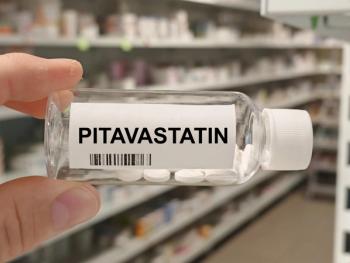
- March 2024
- Volume 90
- Issue 3
Fun Fact: What Are Sirtfoods, and Are They Good for You?
Evidence suggests foods that activate sirtuin proteins may be beneficial for metabolic syndromes
Foods that activate sirtuins (SIRTs)—dubbed sirtfoods—could have some polypharmacological functions that reduce the risk of metabolic disorders and other diseases, according to findings from a study published in Foods.1 The authors said that food and nutrition that activate SIRTs may stimulate healthy calorie restriction (CR) without causing malnutrition.1
“The CR-stimulated polypharmacological activities regulate epigenetic mechanisms, target numerous substrates, and initiate a 2-way interactive reaction between dietary and gut environmental components,” the authors wrote in the article.1
SIRTS AND METABOLIC PROCESSES
Sirtfoods were first mentioned in a 2013 article by Pallauf et al that discussed the possible health benefits associated with a diet combining elements of the Asian and Mediterranean diets, both of which contain a larger number of foods that activate SIRTs.2 In recent years, further research has been undertaken on the benefits of SIRTs (which are nicotinamide adenine dinucleotide [NAD+]–dependent deacetylases and [adenosine diphosphate]-ribosyltransferases) and SIRT modulation.1
SIRTs are a family of signaling proteins that are involved in metabolic processes, mainly glucose and lipid metabolism, according to research findings published in Nature. There are 7 members in the family (SIRT1-SIRT7), and different SIRTs can promote different types of healthy metabolism.3
For instance, high levels of SIRT1 can maintain blood sugar stability to regulate glucose metabolism and can also increase insulin sensitivity via the downregulation of protein tyrosine phosphatase 1B. In lipid metabolism processes, SIRT1 decreased lipids (in vitro and in vivo) by activating AMPK, a protein associated with glucose tolerance. SIRT2 may prevent lipid metabolic disorders, whereas SIRT3 acts on the lipid metabolism pathway. SIRT3 can also promote mitochondrial membrane and structure stability. Conversely, silencing certain SIRTs can regulate collagen production.
SIRTs can act on other metabolic processes such as glutamine metabolism. In previous reports, SIRT4 acted as a tumor suppressor by inhibiting glutamine metabolism in colorectal cancer cells. Mounting evidence also suggests that SIRTs can also work against other forms of cancers and inflammation and increase the likelihood of healthy aging.4
SIRTS AND AGING
Investigators of a 1999 study suggested that SIRT2 overexpression extended the lifespan of yeast in a laboratory by approximately 70%.4 Moreover, recent evidence suggests that SIRTs can benefit aging and reduce the risk of age-related diseases such as some cancers, according to authors of a review published in Aging and Disease.4
SIRTs also contain NAD+-dependent deacetylases that can regulate age-protecting DNA repair, promote cancer cell apoptosis, and work toward “promoting longevity and protecting against cancer via altering substrate, localization, stability, and protein-protein interactions,” study authors wrote in the article.4
Further, CR stimulation—still one of the only interventions to be clinically shown to increase the lifespan of many species in clinical trial findings—may promote the expression of SIRT1, according to authors.
“The activators of sirtuins are considered to mimic these beneficial effects [of CR stimulation] and are hence attractive therapeutics for age-related diseases,” they wrote.
Furthermore, some SIRT-modulating compounds are found in food, including resveratrol, piceatannol, anthocyanidin, and quinine.1 Resveratrol in particular is shown to be chemopreventive against leukemia, skin cancer, and prostate cancer,4 and SIRTs can regulate other aging factors such as stress and inflammation, both of which can lead to cancer.5
Sirtfoods and their metabolites do not appear to have severe adverse events. However, more research should be done to understand their role in a diet for health and well-being; more research should also evaluate “pharmacokinetics, pharmacodynamics, synergistic gut interactions, benefits, and appropriate dose,” study authors concluded.1
REFERENCES
1. Akan OK, Qin D, Guo T, Lin Q, Luo F. Sirtfoods: new concept foods, functions, and mechanisms. Foods. 2022;11(19):2955. doi:10.3390/foods11192955
2. Pallauf K, Giller K, Huebbe P, Rimbach G. Nutrition and healthy ageing: calorie restriction or polyphenol-rich “MediterrAsian” diet? Oxid Med Cell Longev. 2013:2013:707421. doi:10.1155/2013/707421
3. Wu QJ, Zhang TN, Chen HH, et al. The sirtuin family in health and disease. Signal Transduct Target Ther. 2022;7(1):402. doi:10.1038/s41392-022-01257-8
4. Zhao L, Cao J, Hu K, et al. Sirtuins and their biological relevance in aging and age-related diseases. Aging Dis. 2020;11(4):927-945. doi:10.14336/AD.2019.0820
5. Singh N, Baby D, Rajguru JP, Patil PB, Thakkannavar SS, Pujari VB. Inflammation and cancer. Ann Afr Med. 2019;18(3):121-126. doi:10.4103/aam.aam_56_18
Articles in this issue
almost 2 years ago
Continuing Education Programming Focuses on Specialty Pharmacy Skillsalmost 2 years ago
Pharmacy Policy Updates, March 2024almost 2 years ago
Pharmacist Spotlight: Natalie Young, PharmD, BCSCPalmost 2 years ago
Condition Watch: Dry Eye Reliefalmost 2 years ago
Pharmacists Make Positive Impact Through Clinical Interventionsalmost 2 years ago
Self-Care With Vitaminsalmost 2 years ago
Mandatory Immunization of Health Care Workers Leads to ControversyNewsletter
Stay informed on drug updates, treatment guidelines, and pharmacy practice trends—subscribe to Pharmacy Times for weekly clinical insights.














































































































































































































